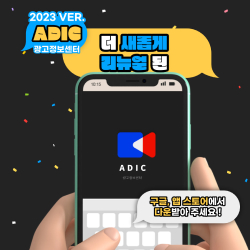- [CJ?메조미디어] 2025 타겟?리포트_50대
- [플레이디] 2025 광고·마케팅 트렌드 전망 리포트
- [나스미디어]2024년 11월 2025 디지털 미디어 & 마케팅 전망
- [2025년 7월] 2025 상반기 디지털 미디어 & 마케팅 결산
- [인크로스]2025년 1월 미디어 이슈 리포트
- [2025년 5월] 2025 NPR 요약보고서
- 기아차 SOUL의 혁신적인 제품전략 -소비자의 soul을 움직이다-
- [Case Study] 디지털 미디어 광고 사례
- 조선-중앙-동아일보의 유사성과 차별성:1면 구성과 사설의 이념성을 중심으로
- [2024년 12월] 한 장이면 고민 끝! 2025 마케팅 이슈 캘린더
자료요약
제3자 효과는 대표적인 미디어 효과 이론으로 다양한 맥락에서 많은 실증 연구가 진행되었지만, 이론적으로 정제되지 못했다는 지적을 받아 왔다. 본 연구는 제3자 효과의 이론적 논의 가운데 논란이 되고 있는 세 가지 측면을 지진 위험 보도 맥락에서 다루었다. 1) 제3자 지각의 ‘제3자’ 유형에 따른 사회적 거리 대 타깃 결과 가설을 검증하였다. 2) 제3자 지각이라는 지각적 편향을 줄이는 요인으로서 언론 신뢰도와 위험 인식의 역할을 규명하였다. 3) 행동적 요소로서 지진 대비 행동 의도와 제3자 지각과의 관계를 규명하되, 예측 요인을 포괄적으로 검토하였다. 2017년 11월 포항 지진 직후 지진 지역 거주자와 비거주자를 대상으로 실시한 온라인 설문 자료를 분석한 결과는 다음과 같다. 1) 지진 위험 뉴스가 자신보다 타자에게 더 영향이 크다는 제3자 지각은 견고하게 나타났지만, 사회적 거리 결과보다 타깃 결과 가설이 더 지지되는 것으로 나타났다. 2) 언론 신뢰도와 위험 인식이 높아질수록 제3자 지각은 작게 나타났다. 3) 지진 위험 대비 의도는 제3자 지각(특히 지진 피해 지역 주민이 타자인 경우)과는 부정적 관계를, 언론 신뢰도 및 위험 인식과는 긍정적인 관계를 나타냈다. 본 연구 결과는 제3자 효과의 이론적 논의를 더욱 풍부하게 하며, 위험 이슈로서 새롭게 부상한 지진 위험에 대한 공중의 인식과 반응을 파악하는 데 기여할 수 있다.
The third-person effect is one of the representative media effects theories producing a considerable amount of empirical studies. But it has been criticized due to lack of its theoretical refinement. In the context of earthquake risk news coverage, this study shed light on the following three aspects that still remain unanswered: It (1) tested social distance corollary versus target corollary, the competing hypotheses related to the type of “3rd person”; (2) investigated roles of media credibility and risk perceptions in reducing the third-person perception (TPP); and (3) examined comprehensively the relationships between TPP and intention to prepare for earthquake risks as a behavioral component. This study analyzed online survey data collected among residents and non-residents of the earthquake-striken areas right after Pohang earthquake on November, 2017. The results are the following: (1) The perception that earthquake risk news are more influenced by others than by self (TPP) was robust, but target corollary appears more supported than social distance corollary; (2) The higher media credibility and risk perceptions are, the lower TPP was; and (3) intention to prepare for earthquake risks was negatively related to TPP and positively related to media credibility and risk perceptions. The findings contribute to enriching theoretical discussions on TPE and understanding the public’s perceptions and responses regarding the newly emerging risk topic of earthquake.
The third-person effect is one of the representative media effects theories producing a considerable amount of empirical studies. But it has been criticized due to lack of its theoretical refinement. In the context of earthquake risk news coverage, this study shed light on the following three aspects that still remain unanswered: It (1) tested social distance corollary versus target corollary, the competing hypotheses related to the type of “3rd person”; (2) investigated roles of media credibility and risk perceptions in reducing the third-person perception (TPP); and (3) examined comprehensively the relationships between TPP and intention to prepare for earthquake risks as a behavioral component. This study analyzed online survey data collected among residents and non-residents of the earthquake-striken areas right after Pohang earthquake on November, 2017. The results are the following: (1) The perception that earthquake risk news are more influenced by others than by self (TPP) was robust, but target corollary appears more supported than social distance corollary; (2) The higher media credibility and risk perceptions are, the lower TPP was; and (3) intention to prepare for earthquake risks was negatively related to TPP and positively related to media credibility and risk perceptions. The findings contribute to enriching theoretical discussions on TPE and understanding the public’s perceptions and responses regarding the newly emerging risk topic of earthquake.
목차
1. 연구 배경
2. 문헌 연구
3. 연구 방법
4. 연구 결과
5. 결론 및 논의
2. 문헌 연구
3. 연구 방법
4. 연구 결과
5. 결론 및 논의
지진 위험
제3자 지각
행동적 요소
언론 신뢰도
위험 인식
사회적 거리 결과
타깃 결과
Earthquake risks
third-person perception
behavioral component
media credibility
risk perception
social distance corollary
target corollary











